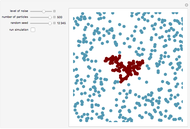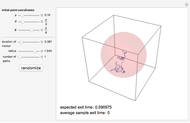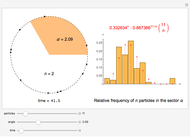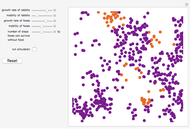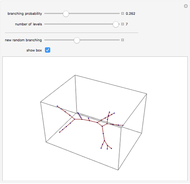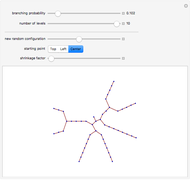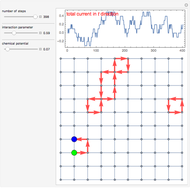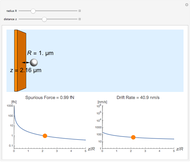Spurious Forces on a Brownian Particle in a Diffusion Gradient

Requires a Wolfram Notebook System
Interact on desktop, mobile and cloud with the free Wolfram Player or other Wolfram Language products.
The thermal noise known as Brownian motion acting on microscopic objects (e.g., biomolecules and nanodevices) can be represented as if they were spurious forces. This Demonstration exemplifies these apparent forces acting on a spherical Brownian particle near a wall. You are invited to explore such forces as a function of the particle radius and distance from the wall.
Contributed by: Thomas Brettschneider and Giovanni Volpe (March 2011)
Open content licensed under CC BY-NC-SA
Snapshots
Details
The understanding of forces is central to a comprehensive picture of physical reality. Nowadays it is becoming increasingly important to explore forces on micro- and nanoscopic length scales. Such forces are typically in the piconewton and femtonewton range. Apart from the technological challenge intrinsic to dealing with such minute forces, it is important to realize that the general concepts of everyday life cannot be simply scaled down to nanoscopic objects, due mainly to the thermal noise affecting the motion of small objects (Brownian motion).
For microscopic objects immersed in a liquid, viscous forces dominate by several orders of magnitude over inertial effects, that is, they are overdamped. This implies that a constant force  leads to a constant terminal drift velocity
leads to a constant terminal drift velocity  , so that
, so that  , with
, with  representing the friction coefficient. However, Brownian noise complicates the situation. Indeed, the presence of a spatially varying Brownian noise leads to the presence of apparent forces, which exist only because of the presence of thermal noise.
representing the friction coefficient. However, Brownian noise complicates the situation. Indeed, the presence of a spatially varying Brownian noise leads to the presence of apparent forces, which exist only because of the presence of thermal noise.
This Demonstration focuses on a paradigmatic case of a Brownian particle near a wall. You can explore the dependence of the spurious force term and the associated drift on the particle radius and distance from the wall in water as medium. The correction terms become more relevant for smaller distances and radii. While the drift reaches a constant value for  , the spurious force diverges. For high values the force is indicated by a green arrow.
, the spurious force diverges. For high values the force is indicated by a green arrow.
Note that in contrast to the drift, the force only depends on the particle radius and not on the viscosity of the medium.
[1] G. Volpe, L. Helden, T. Brettschneider, J. Wehr, and C. Bechinger, "Influence of Noise on Force Measurements," Phys. Rev. Lett., 104(17), 2010.
Permanent Citation








